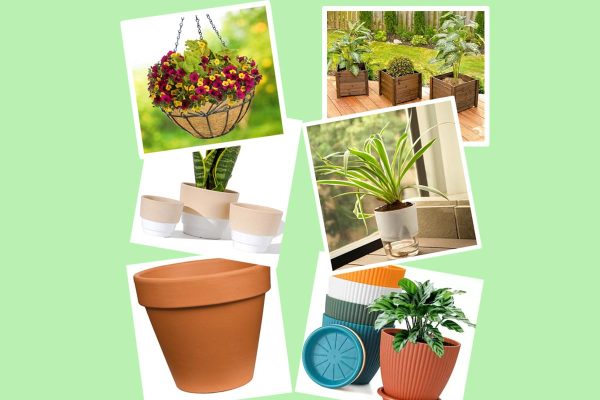
Secrets of the Nursery: Expert Gardening Tips for Planting in Plastic Pots
If you’re passionate about gardening, chances are you’ve planted a plant in a plastic pot at some point. However, many times, plants in our plastic pots fail to develop properly or even die. In such cases, it’s essential to know the correct way to plant in plastic pots.
Where green thumbs are born and plants thrive! Whether you’re a seasoned gardener or just starting out, mastering the art of planting in plastic pots can elevate your gardening game to the next level. In this blog, we’ll uncover the secrets of the nursery and share expert tips to ensure your plants flourish in plastic pots.
The correct way to plant in a plastic pot:

Step 1: The first and most crucial step in planting in a plastic pot is selecting the right pot. Yes, choosing the appropriate pot size for the plant is extremely important.
Step 2: Check for drainage holes in the pot. If there are no holes at the bottom, you’ll need to create them using a drill to ensure proper drainage.
Step 3: Prepare the soil mixture according to the needs of the plant. You can use a combination of different types of soil, compost, and sand. Mix the soil thoroughly and fill the pot with it.
Step 4: Now it’s time to carefully remove the plant from its original pot and place it in the plastic pot. Place the plant in the center of the soil mixture and cover its roots thoroughly with soil.
Also Read This : Transforming Dry Leaves into Garden Gold: A Simple Trick for Organic Fertilizer
Benefits of Plastic Pots:

Lightweight: Plastic pots are lightweight, making them easy to handle, move, and transport, especially for larger plants.
Durable: Plastic pots are more resistant to breakage compared to ceramic or clay pots, making them a long-lasting option for gardening.
Affordable: Plastic pots are often more cost-effective than alternatives such as ceramic or terracotta pots, making them accessible to a wide range of gardeners.
Versatility: Plastic pots come in various colors, shapes, and sizes, allowing for flexibility in garden design and decoration.
Easy to Clean: Plastic pots are easy to clean and maintain, requiring only simple washing with soap and water to remove dirt and debris.
Insulation: Plastic pots provide better insulation for plant roots compared to terracotta or ceramic pots, helping to regulate soil temperature and moisture levels.
Moisture Retention: Plastic pots retain moisture well, reducing the frequency of watering required for plants, especially in hot or dry climates.
Overall, plastic pots offer a convenient and practical option for gardening, suitable for both indoor and outdoor use.
Also Read This : Matchstick Magic: Unlocking Garden Growth with This Surprising Technique
Drawbacks of Plastic Pots:
Environmental Impact: Plastic pots are made from non-biodegradable materials, contributing to plastic pollution and environmental degradation.
Lack of Breathability: Plastic pots have limited breathability compared to natural materials like clay or terracotta, which can lead to poor soil aeration and drainage.
Heat Retention: Plastic pots can absorb and retain heat, causing soil temperatures to rise and potentially harming plant roots, especially in hot climates.
Fragility in Extreme Temperatures: Plastic pots may become brittle and crack in extreme temperatures, leading to damage and reduced longevity.
Potential Chemical Leaching: Some plastic pots may contain harmful chemicals such as BPA or phthalates, which can leach into the soil and affect plant health.
Discoloration and Degradation: Over time, exposure to sunlight and weathering can cause plastic pots to fade, discolor, or become brittle, affecting their aesthetic appeal and structural integrity.
Limited Aesthetic Appeal: While plastic pots come in various colors and designs, they may lack the natural and aesthetic appeal of pots made from materials like clay, ceramic, or wood.
Overall, while plastic pots offer convenience and affordability, they also come with significant environmental and functional drawbacks that gardeners should consider when choosing containers for their plants.
Also Read This : Bring the Outdoors In: Easy-to-Plant Indoor Trees That Thrive at Home
Alternatives to Plastic Pots:

Clay Pots:
Clay pots are breathable and provide good aeration to plant roots. They are also environmentally friendly as they are made from natural materials and biodegradable.
Ceramic Pots:
Ceramic pots come in a variety of colors, shapes, and sizes, making them versatile for garden decoration. They are durable and provide good insulation for plant roots.
Terracotta Pots:
Terracotta pots are made from baked clay and have excellent breathability, allowing air and moisture to penetrate the soil. They are affordable and provide a rustic look to your garden.
Fiber Pots:
Fiber pots are made from organic materials such as peat, coconut coir, or wood pulp. They are lightweight, biodegradable, and provide good drainage for plants.
Also Read This : Sandy Soil Marvels: Unveiling India’s Top 10 Resilient Plants
Mastering the art of planting in plastic pots is a valuable skill for any gardener. By following these expert tips and secrets of the nursery, you can create thriving potted gardens that will bring joy and beauty to your home or outdoor space. So roll up your sleeves, grab your potting mix, and let’s get planting!
Also Read This : Exploring Garden Containers: A Guide to Types, Pros, and Cons
Also Read This : Avoiding a Common Mistake: Preventing Newly Purchased Green Plants from Drying Up at Home




